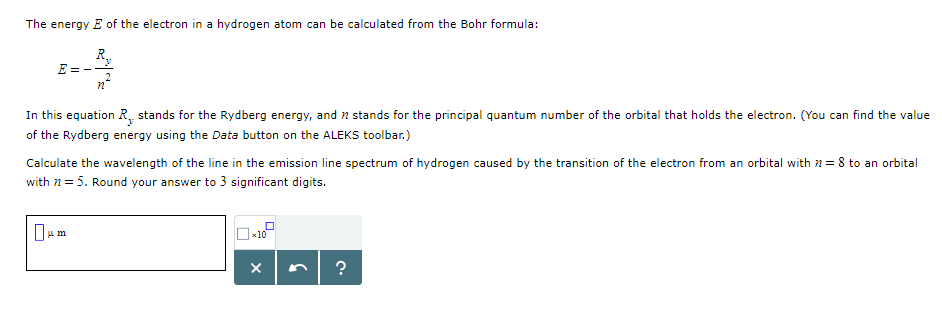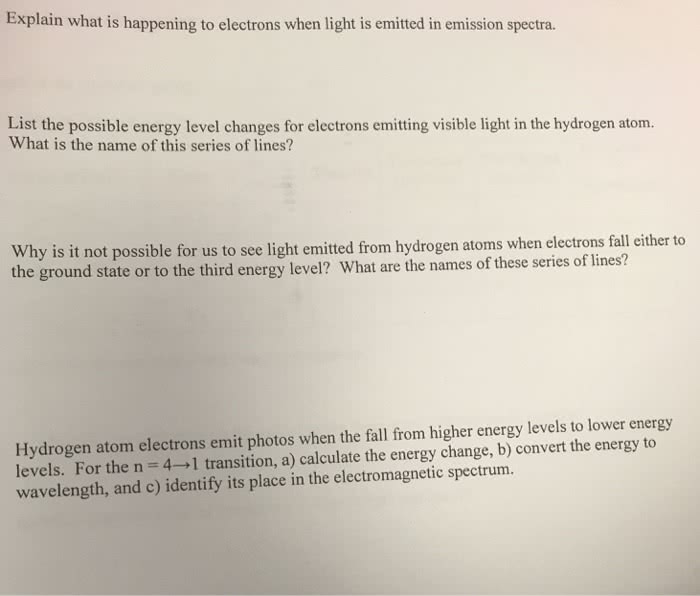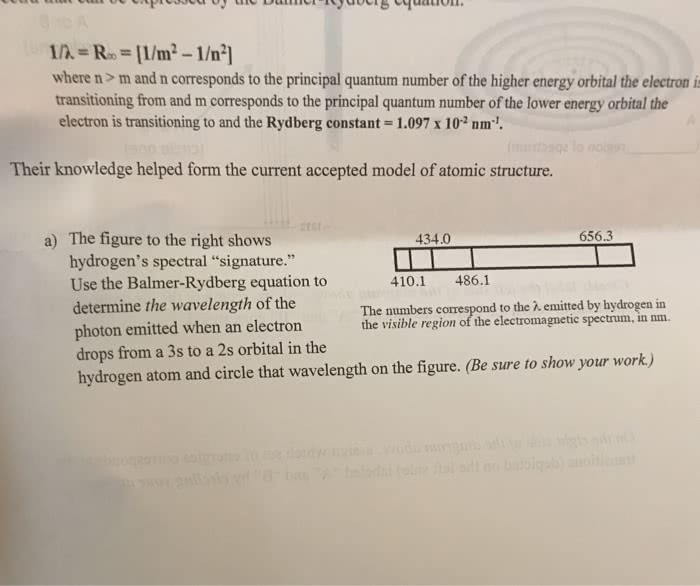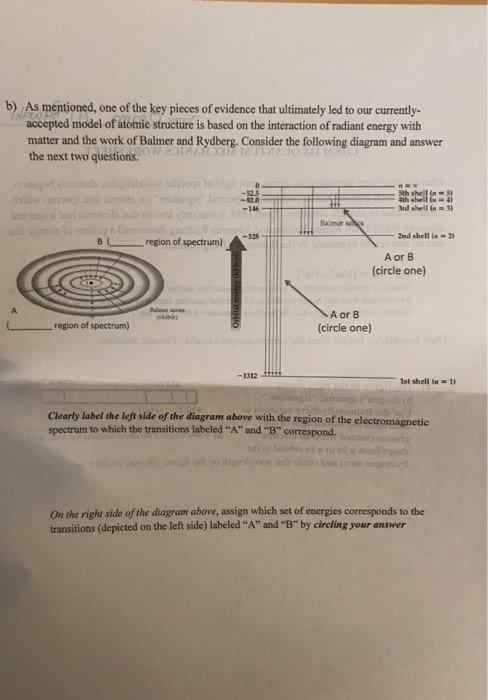CHEM 01LA Lecture Notes - Lecture 7: Rydberg Formula, Rydberg Constant, Electromagnetic Spectrum

CHEM 01LA Experiment 7: Emission of Light from Hydrogen and Metal Atoms
●Experimental Purpose
○The purpose of this experiment is to determine atomic hydrogen emission line
positions to experimentally determine the Rydberg constant, and identify an
unknown metal ion in the form of chloride salts through flame tests
●Theory
○Electrons in an atom can exist only in certain allowed energy levels
■Electrons in a ground-state atom can be excited to a high-energy state by
energy absorption
■When the electron returns to a lower-energy state, light radiation may be
emitted
●Energy corresponds to frequencies and wavelengths in the
spectrum
○Visible wavelength of light: 370 - 700 nm
○Rydberg formula: empirically describes the wavelengths of light in the
electromagnetic spectrum corresponding to changes in electronic states in
hydrogen
■= RH( - )
λ
1 1
n(l)2
1
n(h)2
●λ = wavelength of light of the spectral line
●nl = the lower (more stable) principal quantum number
●nh = the higher principal quantum number
●RH = 1.10 x 10-7 m-1
■Note: Transitions to nl = 1 correspond a return to ground state
●Energies associated with removal/ return of an electron involving
this level are the highest
Document Summary
Chem 01la experiment 7: emission of light from hydrogen and metal atoms. The purpose of this experiment is to determine atomic hydrogen emission line positions to experimentally determine the rydberg constant, and identify an unknown metal ion in the form of chloride salts through flame tests. Electrons in an atom can exist only in certain allowed energy levels. Electrons in a ground-state atom can be excited to a high-energy state by energy absorption. When the electron returns to a lower-energy state, light radiation may be emitted. Energy corresponds to frequencies and wavelengths in the spectrum. Visible wavelength of light: 370 - 700 nm. Rydberg formula : empirically describes the wavelengths of light in the electromagnetic spectrum corresponding to changes in electronic states in hydrogen. = wavelength of light of the spectral line. N l = the lower (more stable) principal quantum number. N h = the higher principal quantum number.





